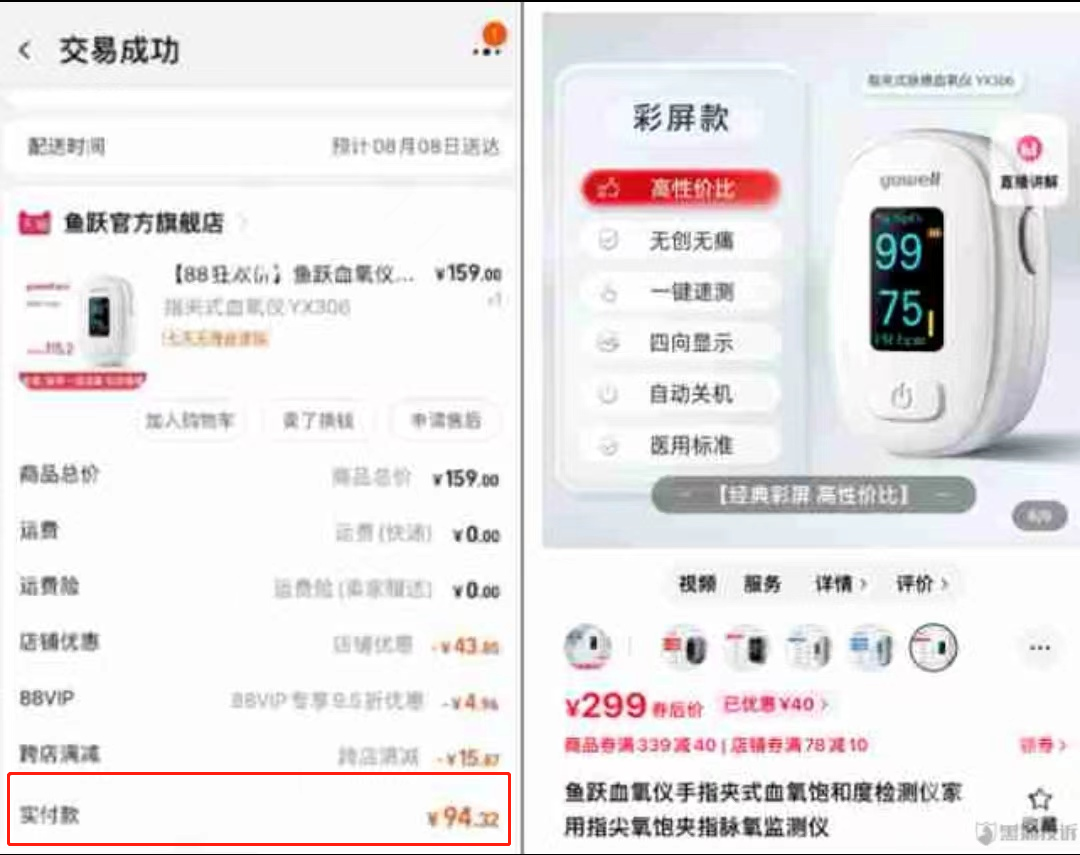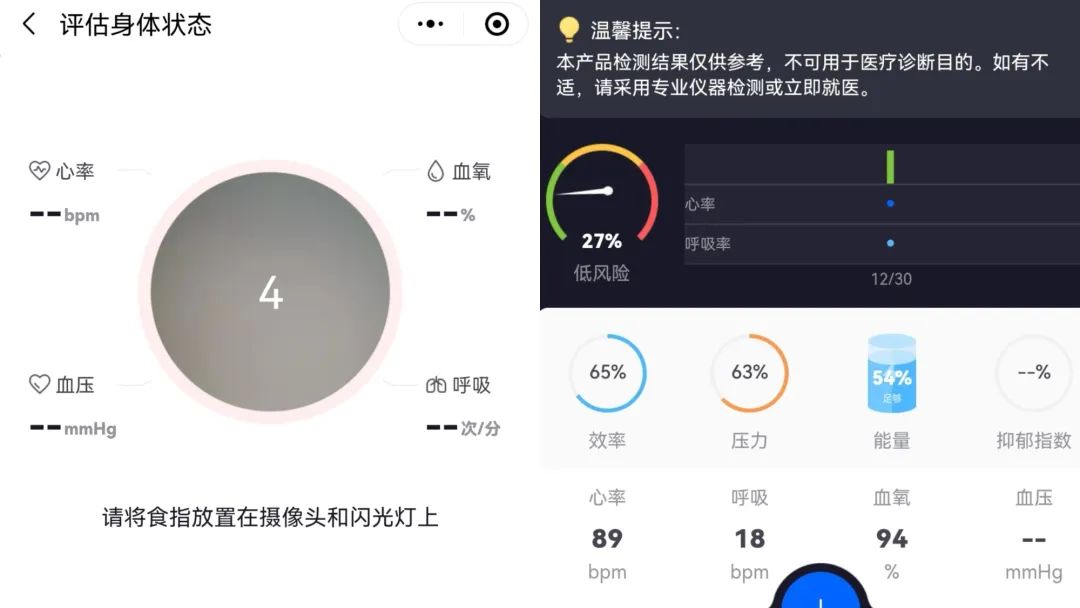Recently, the issue of “silent hypoxia” among some elderly individuals after contracting COVID-19 has drawn attention, leading to a surge in demand for pulse oximeters.
Some consumers have also purchased smartwatches and bands with blood oxygen monitoring functions, and some have even used apps and mini-programs to monitor their blood oxygen levels. In response, Sha Xianzheng, head of the Biomedical Engineering program at China Medical University, stated,“This monitoring method can serve as a health reference and exercise guidance, but it is not as accurate as medical-grade pulse oximeters.”
 Pulse oximeter sales are booming, with significant price increases
Pulse oximeter sales are booming, with significant price increases
Recently, pulse oximeters have seen varying degrees of price increases and shortages in the market.
On a certain online complaint platform, Ms. Zhang from Shanghai reported that during a promotional event, she could purchase a certain brand of pulse oximeter originally priced at 159 yuan for only 94 yuan, but by December 2022, the price had risen to 299 yuan.

▲ The pulse oximeter purchased for 94 yuan has now increased to 299 yuan.
On January 3, reporters visited several pharmacies in Beijing and found that the selling prices of pulse oximeters ranged from 200 to 400 yuan. Staff members stated that prices vary by brand and model, but this has always been the price in the store.

Measuring blood oxygen with apps and mini-programs?
Expert: For reference only
As pulse oximeters are being snatched up, some people are purchasing smartwatches and bands with blood oxygen monitoring capabilities, and some are opting to monitor their blood oxygen levels through apps and mini-programs.
In a test using a mini-program, the reporter placed their index finger lightly on the phone’s camera and flash, and within 90 seconds, they could measure blood oxygen and heart rate, but the page indicated that the monitoring results are for reference only and should not be used for medical diagnosis.

▲ The reporter measured blood oxygen and heart rate values using a mini-program.
Sha Xianzheng analyzed that similar mini-programs and mobile apps online detect heart rate and blood oxygen saturation by using the phone’s camera to measure the fluctuations and color changes in the blood vessels at the fingertip or facial arteries caused by the heartbeat (i.e., spectral analysis).
Sha Xianzheng stated that generally, the principle of measuring blood oxygen saturation with mobile software is similar to that of pulse oximeters, as it also uses the phone’s camera to measure the absorption and reflection of different wavelengths (colors) of light by the human body, calculating the absorption levels of hemoglobin and oxygenated hemoglobin.
However, due to the varying performance of different phone cameras and the complexity of the usage environment, it is difficult to say how accurate the actual measurement of blood oxygen saturation is,but the measurement accuracy of mobile apps is certainly not as good as that of medical-grade pulse oximeters. From a clinical diagnostic perspective, only accurate measurement results are meaningful.
 Do not rush to buy or hoard; leave it for those who truly need it
Do not rush to buy or hoard; leave it for those who truly need it
Blood oxygen saturation is one of the important indicators of health. The normal transcutaneous arterial blood oxygen saturation (hereinafter referred to as “blood oxygen saturation”) should be maintained between 95% and 100%; 90% to 94% indicates insufficient oxygen supply, below 90% indicates hypoxia, and below 80% indicates severe hypoxia, which can cause significant damage to the body and even threaten life.
Sha Xianzheng explained that low blood oxygen saturation is usually a gradual process, and the body’s hypoxia worsens over time. Patients do not typically exhibit very typical symptoms, or they may already have difficulty breathing, which suddenly worsens, making it less noticeable. This phenomenon of extremely low blood oxygen saturation without difficulty breathing is clinically referred to as “silent hypoxia.”
According to surveys, some elderly individuals over 65, as well as patients with obesity, smoking, chronic obstructive pulmonary disease, diabetes, and tumors, are prone to “silent hypoxemia,” although the exact mechanism is not fully understood.
In Sha Xianzheng’s view, given that the elderly and patients with underlying conditions are more likely to experience “silent hypoxemia,” they may have a delayed response to hypoxia and may not even feel chest tightness or difficulty breathing. When the condition is more severe, they may also experience cognitive impairments, making it difficult for caregivers to detect whether they are hypoxic. They need pulse oximeters for monitoring.
Sha Xianzheng stated that in the context of high demand for pulse oximeters, people should not rush to buy or hoard them for psychological comfort, as this will prevent those who truly need them from purchasing them in a timely manner.
Source: Central Broadcasting NetworkEditor on duty: Huang YunyiDutyProofreader:Mai Xueli
Duty Director: Tang Haibo
Duty Editorial Committee: Li Pei
For more exciting news, please follow the early report’s push notifications
0771-5690127 (Report) 0771-5690976 (Advertisement)
You might also be interested in:• A 8-year-old girl in Guangxi has passed away, leaving her last gift that saved two people• Dangerous! A power pole fell on the street in Nanning, hitting a small car!• Nanning amusement park’s parent-child annual pass is not allowed to be used before expiration? Response has arrived• A residential building in Liuzhou exploded and collapsed, preliminary investigation results announced“Nanguo Zaobao WeChat Video Account”Selected Content Recommendations